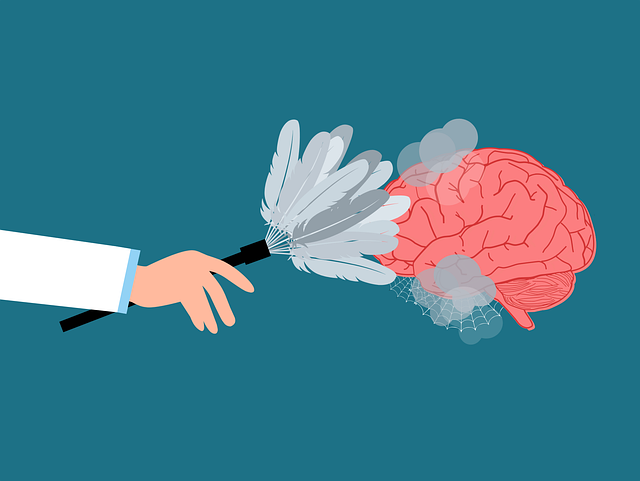Burnout among healthcare providers, particularly young adults and geriatrics on the frontlines, is a growing concern manifesting as emotional exhaustion, depersonalization, and reduced personal accomplishment. Early intervention through tailored therapy enhances resilience and mental health awareness. Strategies include confidence-boosting techniques, self-esteem improvement exercises, EI training, mood management techniques, mindfulness practices, and effective communication strategies. Therapeutic interventions like CBT and empathy building programs reduce stress, improve job satisfaction, and build resilience, ensuring healthcare professionals can maintain well-being while providing quality care to patients across all age groups, focusing on Therapy for Young Adults and Geriatrics.
Healthcare provider burnout is a growing concern, especially among young adults and geriatrics. This article explores comprehensive strategies to prevent burnout in these vulnerable groups. We delve into the unique challenges they face, focusing on creating sustainable work environments and implementing therapeutic interventions that foster resilience and overall well-being. By understanding the root causes of burnout, we can provide effective solutions tailored to meet the needs of young adults and geriatric healthcare providers, ensuring better patient care and professional satisfaction.
- Understanding Burnout in Healthcare Providers: A Focus on Young Adults and Geriatrics
- Creating Sustainable Work environments: Strategies for Prevention
- Therapeutic Interventions: Nurturing Resilience and Well-being
Understanding Burnout in Healthcare Providers: A Focus on Young Adults and Geriatrics

Burnout among healthcare providers is a growing concern, particularly affecting young adults and geriatrics who are on the frontlines of patient care. This phenomenon goes beyond simple job dissatisfaction; it’s characterized by emotional exhaustion, depersonalization, and a diminished sense of personal accomplishment. Young adults, often grappling with significant responsibilities and high-pressure environments, may struggle to maintain work-life balance, leading to increased stress levels and potential burnout. Similarly, geriatric healthcare providers face unique challenges due to the demanding nature of caring for an aging population, which can impact their mental health and overall well-being.
The focus on these demographics is crucial as it allows for early intervention and tailored strategies to combat burnout. Therapy for young adults and geriatrics can play a pivotal role in enhancing resilience and promoting mental health awareness. Confidence-boosting techniques and self-esteem improvement exercises have proven effective in empowering healthcare providers to manage stress, improve job satisfaction, and prevent burnout. By prioritizing their mental health, these individuals can better serve their patients, ensuring a more sustainable and fulfilling career in the healthcare sector.
Creating Sustainable Work environments: Strategies for Prevention

Creating sustainable work environments is a vital strategy to prevent burnout among healthcare providers, particularly those catering to diverse patient demographics such as young adults and geriatrics. This involves implementing practices that foster a healthy work-life balance for staff. One effective approach is promoting emotional intelligence (EI) within the workplace. EI training can enhance communication strategies between healthcare professionals, patients, and their families, leading to better conflict resolution and improved job satisfaction. By encouraging open dialogue and empathy, healthcare providers can build stronger connections with their clients, reducing the emotional strain associated with high-stress jobs.
Additionally, integrating mood management techniques into daily routines can significantly contribute to burnout prevention. This includes providing resources for stress mitigation, such as access to therapy services tailored for young adults and geriatrics, and promoting mindfulness practices. Effective communication strategies, like active listening and clear instructions, ensure patient safety while also reducing healthcare providers’ cognitive load. These sustainable work environment initiatives not only prevent burnout but also enhance the overall quality of care delivered to patients across different age groups, including younger and older generations.
Therapeutic Interventions: Nurturing Resilience and Well-being

Therapeutic interventions play a pivotal role in preventing healthcare provider burnout by nurturing resilience and well-being. For young adults, therapy can be a powerful tool to develop coping mechanisms and enhance emotional intelligence, enabling them to better manage stress and challenging situations. Techniques such as cognitive-behavioural therapy (CBT) help identify and change negative thought patterns, while mindfulness practices promote present-moment awareness and self-compassion—all crucial aspects in preventing burnout.
Similarly, for geriatrics, tailored therapeutic interventions can address unique challenges associated with aging, including the management of chronic illnesses and social isolation. Empathy building strategies, integrated within mental health education programs designed specifically for this demographic, foster deeper connections between healthcare providers and patients, enhancing job satisfaction and reducing stress levels. By focusing on resilience building, these interventions equip healthcare professionals with the tools needed to navigate the complexities of their work while maintaining their well-being.
Burnout among healthcare providers, particularly young adults and geriatrics, is a pressing issue that demands attention. By implementing sustainable work environment strategies, such as workload management, support systems, and regular breaks, we can significantly reduce burnout risks. Therapeutic interventions focusing on resilience-building and mental well-being, including tailored therapy for young adults and geriatrics, play a pivotal role in fostering a healthier, more engaged workforce. These comprehensive approaches not only enhance job satisfaction but also improve patient care, ultimately creating a more positive and productive healthcare landscape.














